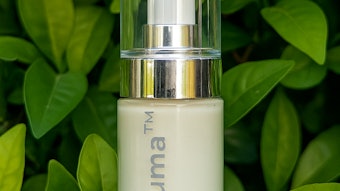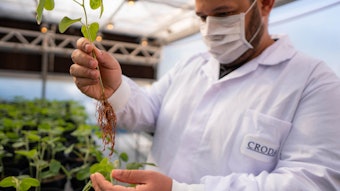“Soap and water and common sense are the best disinfectants.” —William Osler
National Clean Hands Week took place Sept. 21–27, 2008. With so much emphasis on the latest and greatest products and technology, we sometimes overlook the usefulness of our oldest and most basic products—including soap. Familiar to ancient cultures, soap has recently been instrumental for saving millions of children in Africa, and the key components of this—in addition to soap itself—were marketing and a woman with a mission.
Hand washing is constantly monitored by the Centers for Disease Control (CDC) because of its importance in preventing the spread of illness, and the agency’s “Ounce of Prevention” campaign is done in cooperation with Reckitt Benckiser.1 The educational program also encourages the use of alcohol-based products when water is not available, particularly during an emergency, and the brochure recommends washing with soap and water for 20 seconds to be effective, long enough to sing Happy Birthday twice. The Soap and Detergent Association also surveys soap use,2 and some 2006 results are shown in Figure 1. Regardless of individual washing habits, the average American lives in a sanitary environment with many health controls in place. The chances of contracting a fatal disease in developed countries is nothing remotely like the Third World situation.
In sub-Saharan Africa, the AIDS crisis has received great attention. Treatment is expensive and not widely available. But for children, dysentery is far more serious than AIDS in terms of fatalities, and prevention can be surprisingly simple—hand washing with soap. What is not simple is implementation of this solution in impoverished societies. Habits must be changed, and that can only be done through understanding the forces shaping the target society.
Dysentery is an infection of the digestive system that results in severe diarrhea. It is typically the result of unsanitary water containing microorganisms, which damage the intestinal lining. There are two major types of dysentery due to microorganisms: amoebic and bacillary. The consequence for children already in poor health is often death. Val Curtis is an anthropologist who heads the Hygiene Center at the London School of Hygiene and Tropical Medicine. She studied diarrheal disease in Africa and analyzed hygiene behavior in developing countries for many years. She is currently researching the health impacts of hand washing, the effectiveness of consumer marketing in changing hygiene behavior and Darwinian approaches to promoting health. She is particularly interested in the function of disgust and its relationship to hygiene.
Curtis decided there was an opportunity to save millions of children while she was living in the African country Burkina Faso.3 Once know as Upper Volta, the country has a per capita income that makes it one of the poorest nations in the world. Curtis wanted to persuade people to wash their hands, knowing that diseases caused by dirty hands kill a child somewhere in the world every 15 seconds and half the deaths could be prevented by regular use of soap.
Curtis cooperated with P&G, Colgate-Palmolive and Unilever to help form the Global Public-Private Partnership for Handwashing With Soap.4 A campaign was launched in Ghana in 2003. There was plenty of soap and water around, the problem was changing Ghanaians habits, and changing habits involves marketing. Curtis needed the same marketing that makes us brush our teeth several times a day, drink bottled water and spray Febreze. Febreze’s example was the key because it perfectly demonstrated how a company can market a habit. When it was first launched in 1996, it was a failure with consumers. It was directed at malodors, but not enough malodors were around to create a Febreze-using habit. P&G products had historically served existing needs. To support new products, it was necessary to create new habits.
The cue identified by marketing was the act of cleaning a room. New commercials showed women spraying a perfectly made bed or freshly washed clothing, with an open window in the scene. The message was that Febreze was the finishing touch for a cleaning job, and the advertising created a habit capable of sustaining a $650 million product.
The Febreze marketing principle was applied in Ghana. There, a toilet represented a clean image because they replaced pit latrines. Ads were created showing mothers and children leaving bathrooms with purple pigment on their hands that contaminated everything they touched. The idea was not to promote soap but to establish a feeling of disgust if soap was not used. The commercials resulted in 13% more soap use after using the toilet, and 41% percent more use before eating. The same marketing methods are now being applied to drug abuse, antismoking, condom use and obesity.
Closer to home, doctors and hospitals in the U.S. are far from clean. The CDC reports that the most effective way to reduce infection is for medical personnel to wash their hands. Yet on average, doctors wash their hands only about half the time before treating patients. By some estimates hospital infections in the U.S. kill 103,000 patients each year of the two million infected.
One of the big risks is methicillin-resistant Staphylococcus aureus (MRSA). The University of Virginia Hospital virtually eliminated MRSA, and Veterans Hospital in Pittsburgh reduced its infection rate by 85% through programs that require medical personnel to wash their hands before seeing a patient. The hospitals also make sure staffers wear clean uniforms, that all equipment is carefully cleaned, and that hospital rooms are scrubbed after each patient.
Our industry has products and the marketing knowledge that can save millions of lives, and both are critical for success. Between one and three million children a year can be saved just by manipulating hand washing behavior. Val Curtis, studying hygiene, disgust and human behavior, with the support of our industry and the humble soap bar, is saving many of them now.
References
- www.cdc.gov/ounceofprevention
- www.medicinenet.com/script/main/art.asp?articlekey=64316
- C Duhigg, Warning: Habits May Be Good for You, The New York Times, (Jul 13, 2008)
- www.globalhandwashing.org










